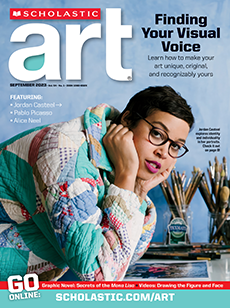Woodcut, or wood-block, printing is one of the oldest printmaking techniques. The first prints were probably made by the Chinese in the A.D. 700's. From China the craft spread to Korea and Japan, where it was considered an art of great importance. Most Asian woodcuts with which the Western world is familiar are Japanese.
No wood-block prints before the early 1400's survive. But there is reason to believe that the technique was used for royal stamps and textile printing before then.
After the modern printing press with movable type was invented in the 1400's, woodcut printing became the method used to reproduce drawings for printed books. At this time, woodcutting was considered just a technique for reproducing drawings, not a creative art. Therefore, skillful artists like Albrecht Dürer (1471-1528) only designed the woodcut print; the actual cutting was assigned to an artisan.
In the 1500's, metal engraving and etching became the most important printmaking techniques in Europe. For the next several hundred years, woodcut printing was not very popular. The art was not revived until the middle of the 1800's, when manufacturers of beautiful books began to return to the woodcut print for illustrations.
